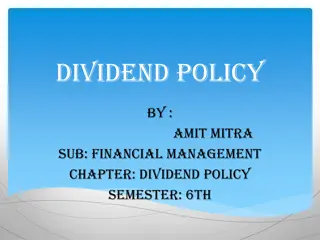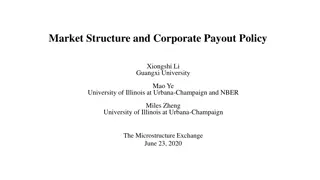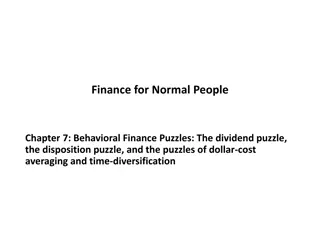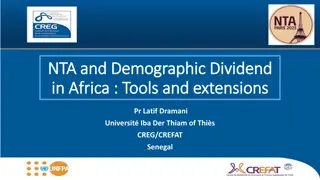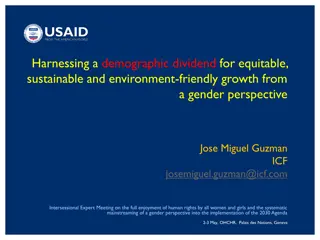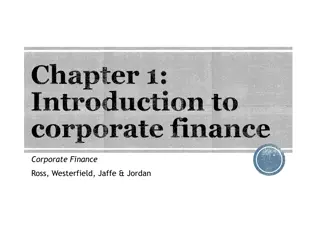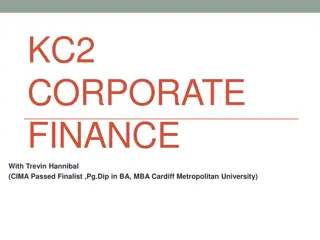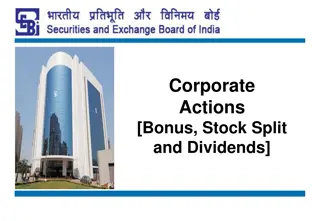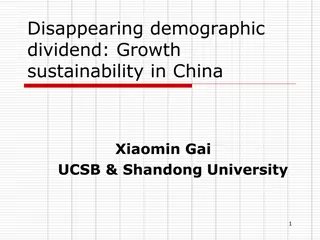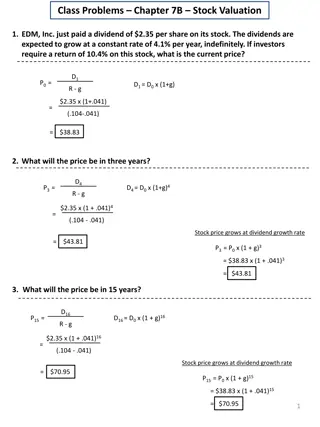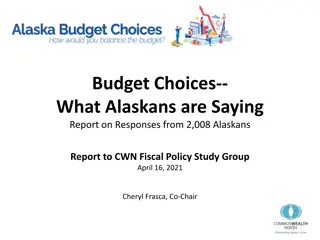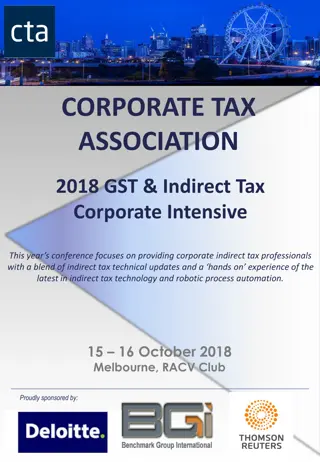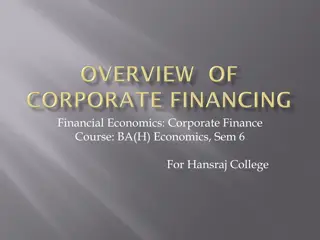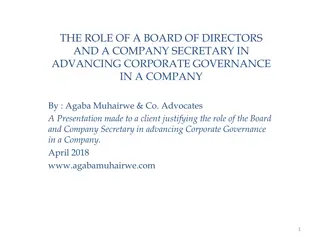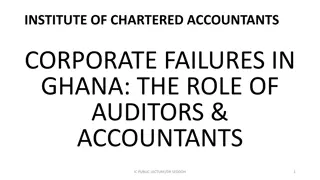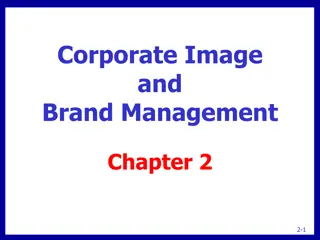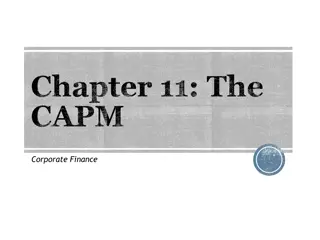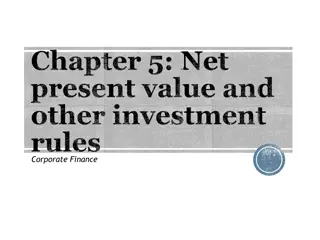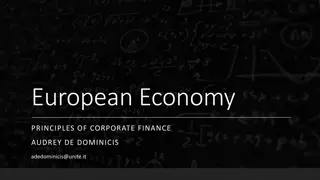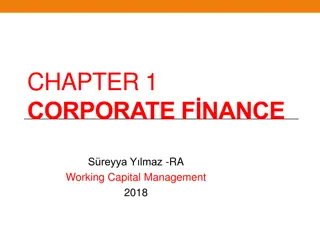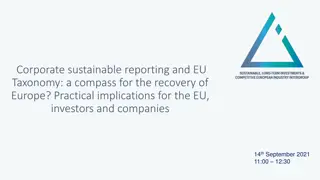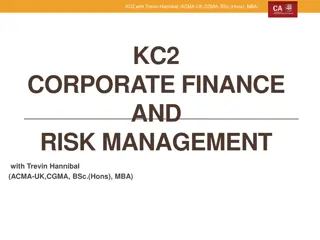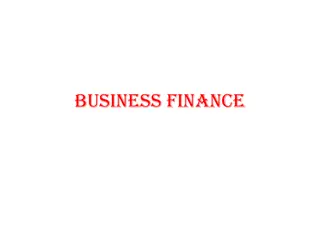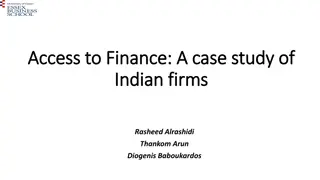Understanding Dividend Policy and Share Repurchase in Corporate Finance
Firms in corporate finance make decisions on dividend payouts and share repurchases, impacting company value and shareholder returns. Dividends are payments to shareholders, while share repurchases involve buying back company stock. Companies can choose between these methods based on various factors like cash flow, capital structure, and shareholder preferences. The process of dividend distribution and share repurchase strategies are crucial aspects of financial management for firms aiming to optimize value for stakeholders.
Download Presentation

Please find below an Image/Link to download the presentation.
The content on the website is provided AS IS for your information and personal use only. It may not be sold, licensed, or shared on other websites without obtaining consent from the author. Download presentation by click this link. If you encounter any issues during the download, it is possible that the publisher has removed the file from their server.
E N D
Presentation Transcript
Corporate Finance: BA (H) Economics, Sem 6 For HrC By- Neha Arya
In addition to the regular budgeting and financing decisions, firms also face the decision of making dividend shareholders from time-to-time. This is known as the Payout/Dividend policy of the firm. It shows the trade-off earnings and payment of cash and issuing new shares. payments to its between retained
Firms can return cash to their shareholders by paying a dividend or by repurchasing its shares (share repurchase/stock buyback discussed in one of the lectures earlier). The key questions regarding dividend payouts are: 1. How do managers decide on the amount and form of the payout? 2. How does payout policy affect company value?
A companys Board of Directors decide the dividends to be paid by it to its shareholders. A dividend announcement states that dividend payments will be made to all stockholders who are registered on a Record date . Stocks are traded with dividend until business days before the record date. After the record date they trade ex dividend . 2
Most periodically but at times, a one-off or special dividend may be paid as well. It is also to be noted that stock dividends are also announced by companies at times, instead of cash dividends. firms pay regular cash dividends
A company may repurchase its own stock from the market instead of paying cash dividends to its shareholders. The repurchased stock may either be kept in the company s treasury or resold when the company needs funds. Share repurchase can be carried in many ways:
1. Company can announce its plan to buy its stock in open market via a Dutch auction (stating multiple prices it is willing to buyback stock and inviting offers from shareholders). 2. Company can offer to buy a fixed number of shares at a set price (that is generally 20% higher than current market value) 3. Direct negotiation with a major shareholder
If say, a company has accumulated large amounts of unwanted cash or wishes to change its capital structure by replacing equity with debt. It will usually do so by repurchasing stock rather than dividends. So, clearly dividends and stock repurchases have different uses; with repurchases being more volatile with respect of business cycles. by paying out large
Lintners Model: Lintner presented four stylized facts to answer this question: 1. Firms have long-run target dividend payout ratios. Mature companies with stable earnings generally pay out a high proportion of earnings; growing companies have low payouts (if any, at all). 2. Managers focus more on dividend changes than on absolute levels. 3. Dividend changes follow shifts in long-run, sustainable earnings. Managers smooth dividends. Transitory earnings changes are unlikely to affect dividend payouts. 4. Managers are reluctant to make dividend changes that might have to be reversed (specially about reducing dividend payments).
Based on these four facts, Lintner developed a model that explains dividend payments. Say, a firm has set a target payout ratio. Dividend payment in coming year (DIV1) would be: DIV1 = target dividend = target ratio * EPS1 Where, EPS1 is earnings per share
Dividend change = DIV1- DIV0 = target change = target ratio * EPS1 - DIV0 This implies that a firm that doesn t deviate from target ratio, would necessarily have to change its dividend changed (to keep the ratio constant). However, Lintner observed that firms are reluctant to do that to avoid fluctuations in dividend payments to shareholders. whenever earnings
Hence, dividend change actually conformed to the following model: DIV1 - DIV0 = adjustment rate * target change = adjustment rate (target ratio*EPS1-DIV0) More conservative company toward its target more slowly and, therefore, the lower would be its adjustment rate. would move
Conclusion: Lintner s payment by a firm depends on (1) the firm s current earnings and (2) on the dividend for the previous year, which itself depends on that year s earnings and the dividend in the preceding year. So, dividends can be described in terms of a weighted average of current and past earnings of firms. model says that the dividend
Limitations: Tests of Lintner s model by others suggest that it provides a good explanation of how companies decide on the dividend rate. Firms are also expected to take future prospects and past performance into account. but not a complete
Instead of the level of a companys dividend, investors tend to focus on the change in dividend announcements. They view it as an important indicator of earnings. the sustainability of Stock repurchases may signal a firm s confidence in the future. On the other hand, companies may repurchase shares when they have more cash than profitable investment opportunities or when they wish to increase their shareholders would be glad to receive dividend payments! debt levels. Then,
The question here is, Does dividend payout/ amount change the stock s value? There are 3 opposing views in this regard: 1.The Rightist view- Higher dividend payout increases firm s value 2.The Leftist view- Higher reduces firm s value as dividends are taxed more heavily than capital gains. dividend payout
3.The Centrist view/ Middle-of-the-road party- Dividend policy makes no difference, i.e., it is irrelevant (from the firm s perspective).
The Rightist view: This view on divided payouts is based on the argument that there is a group of investors who target high-payout stocks, either (1) due to legal reasons (e.g some financial institutions are legally restricted from holding stocks lacking established dividend records), or (2) because dividends are considered spendable cash income or (3) due to the possibility of receiving a constant cash flow for expenses instead of inconveniently (in terms of transactions and other costs) selling stocks periodically from their portfolios.
There is another argument for why investors desire higher dividends, companies with significant free cash flows and few profitable investment opportunities. It says that shareholders of such firms worry that the company may not channelize available cash flows in a way so as to increase its profits. Hence, they may demand higher dividend payments. specially for
The Leftist view: This view states that if dividends are taxed more heavily than capital gains, firms should pay as low dividends as possible. The available cash should either be retained by firms or used to outstanding shares in the market. In this way, dividends can be turned into capital gains for investors since they pay buyback some of its
relatively lower taxes on them. In this case, investors should obviously pay more for the more desirable, low-dividend paying stocks. It can be said that the leftists advocate Zero Payouts, whenever capital gains have a tax advantage over dividend payouts. But this is an extreme view not supported by all leftists!
Say a company decided on zero dividend payouts and alongside, it goes for periodic share repurchases in order to give cash to its shareholders. Such regular share repurchases will naturally be recognized by the tax authorities for their actual purpose, i.e tax evasion!
The Middle-of-the-road view: This view was introduced in 1961 y Modigliani and Miller (MM s view). It states that dividend/payout irrelevant in perfect capital markets (i.e no taxes, transaction costs imperfections). policy is or other market
Proof/Argument: Say, a firm has made its investment and financing decisions. investment project it has decided on the amount of borrowing needed. Remaining funds are to be managed via retained earnings. So, any surplus money is to be paid out as dividends. For an identified
Say, the firm now decides to pay higher dividends without changing its investment or borrowing policy. So, the extra money required can only come through issue and sale of new shares. To induce the new investors to buy these new issues, there has to be a transfer of value from old to new shareholders (since the firm s market value remains unchanged).
The newly issued shares have value less than those issued before the dividend change. As for the old shareholders, they incur a reduction in their share value i.e, a capital loss. However, this loss is just offset by the extra dividend they receive change/increase. post the dividend
The assumption of perfect capital market by MM, implies that the old shareholders can raise cash by selling shares in addition to receiving dividend payments. So, they have an alternative for dividend/cash receipt. Hence, they can either ask the firm to increase dividend payout or sell some of their shares for getting cash.
In either case, there is going to b a transfer of value from the old to new shareholders. MM s final argument was that, since investors don t rely solely on dividend payments to get cash, they will not be willing to pay higher prices for the shares of the firms offering higher dividend payments. Hence, dividend policy would be irrelevant to a firm s investment and financing decisions.


